The sacred temple complex is cloistered and packed in a space of 65 m × 50 m (213 ft × 164 ft) with three enclosures within a large compound wall of size 700 m × 300 m (2,300 ft × 980 ft), made of laterite stones. The entry is from the east facing gopura, which is in a cruciform embellished with Lokesvara images. The temple is a treasure house of sculptures in the architectural styles of the Bayon and also of the Angkor Wat. The complex is on a single level.
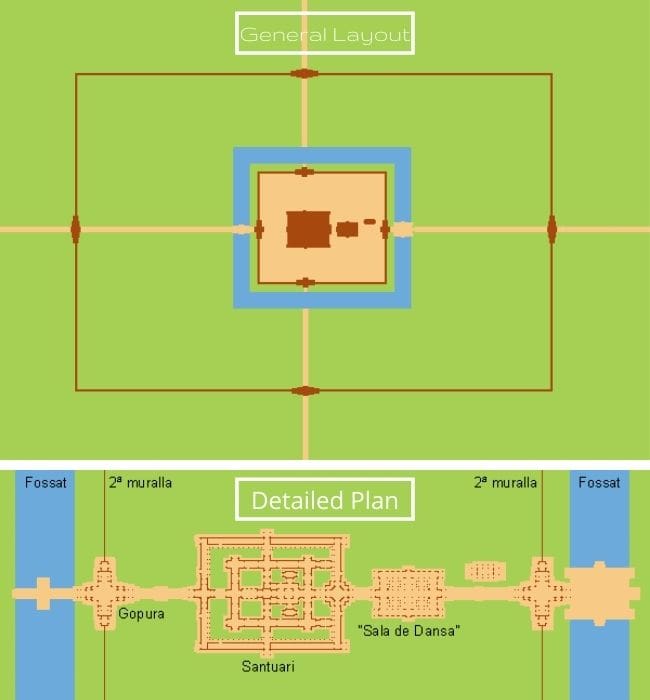
External enclosure
The external enclosure with four concentric walls, has four gopuras similar to the Ta Prohm temple, and all are in some degree of preserved status. At the four corners, the gopuras have a fascia of Lokesvara (Buddhist deity, Avalokitesvara) mounted over Garuda images (it is also mentioned that the smiling faces are of King Jayavarman II, similar to those seen in the Beyan temple).
The east facing gopura, in particular, has well-preserved garuda images on its corners. Two hundred meters from the west entrance of this enclosure leads to a moat, which is decorated with statues of lions and naga-balustrades mounted on garudas. The moat itself has in its precincts the third enclosure which measures 320 m × 300 m (1,050 ft × 980 ft), also enclosed with laterite walls.
The Buddha image at the entrance to the moat, near the second interior gate, is well preserved, considering the fact that most of the other statues have been destroyed or stolen.
Third enclosure
The third enclosure has a gopura which has a cruciform plan. It has pillars which are crossed by vaults. There are three passages in this enclosure, two on either side are independent, with laterite walls. The niches here have small figurines, and large apsara devatas in single poses or in pairs of dancing poses.
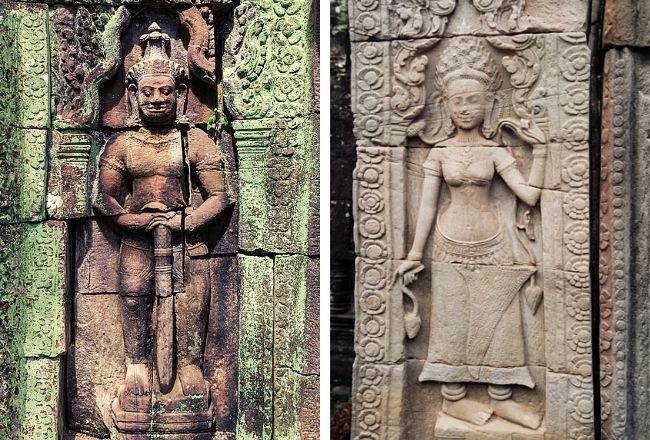
Large Buddha images, in an internal courtyard of this enclosure, have been defaced by vandals. A paved access from here leads to the main shrine, which comprises two galleried enclosures. At the entrance to these enclosures, from the eastern end, is the "Hall of Dancers", which has four open courtyards and the pillars have fine carvings of apsaras.
Second enclosure
The second enclosure, which is part of the main temple, measures 58 m × 50 m (190 ft × 164 ft). It has a gopura on its eastern side and also subsidiary gopura on the west. Entrance doors are at the northern and southern ends.
The gopura is built like a gallery with one exterior wall and double row of pillars which open into a courtyard and which has mostly shored up walls with small openings at the bottom to allow air circulation. The niches here are decorated with images of apsaras, and a Buddha statue in the central hall has been defaced by vandals.
Bayon style architectural features built-in are the "balustered false windows with lowered blinds and devatas with headdresses in the form of small flaming discs set in a triangle." The vaults built in sandstone and laterite have collapsed at several locations of the gallery The inner enclosures contain library building to its north and south and also a central sanctuary.
Inner enclosure
The inner enclosure of the main temple is built on a 36 m × 30 m (118 ft × 98 ft) layout plan. This enclosure has four corner towers abutted by small gopuras. Galleries running along an axis link these towers to the main sanctuary.
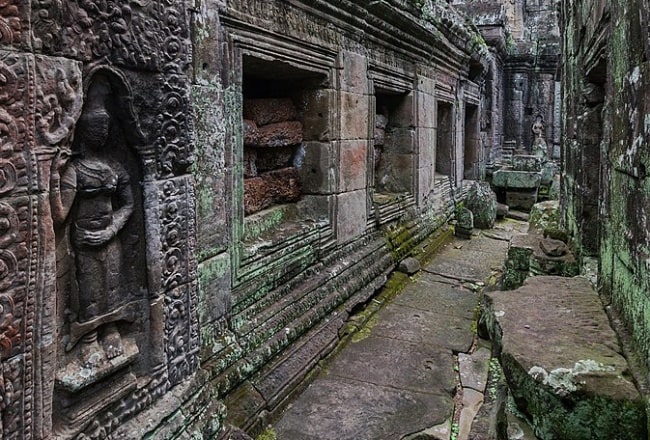
The towers at the north-east and south-east are linked with the second gallery where a Buddha statue in a sitting posture is seen, in the backdrop of an open sky line. The sanctum which is 2.75 m (9.0 ft) square enclosure has some traces of statues of deities.
This entire enclosure, however, is not built in Bayon style and hence conjectured to be of an earlier period. Remnants of wooden ceiling are also seen here. The entrance to the sanctum is flanked by dvarapalas surrounded by apsaras.
Srah Srang
Srah Srang or "The royal bathing pool" or "pool of ablutions" to the east of Banteay Kdei, which was dug to dimensions of 700 metres (2,300 ft)x300 metres (980 ft) during the reign of Rajendraverman in the 10th century, was beautified by Jayavarman VII with well laid out steps of laterite stones with external margin of sandstone, on the banks of the pond facing the Sun.
It is set amidst large trees and has turquoise blue waters all the year round. The approaching steps to the water edge are flanked by two stone statues of lions with ornamented Nāga-balustrades. The pond was reserved for use by the king and his wives. A stone base seen at an island in the centre of the pond once housed a wooden temple where the king did meditation.
At the lily filled lake, watching sunset reflections in the lake is quite an experience. The water from the lake is now used for rice cultivation by farmers of the area.
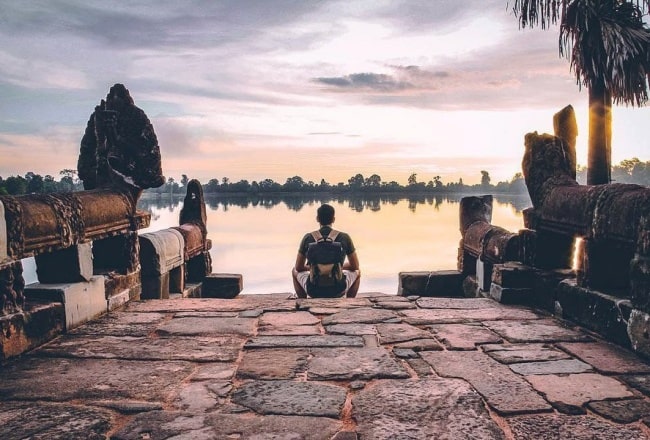
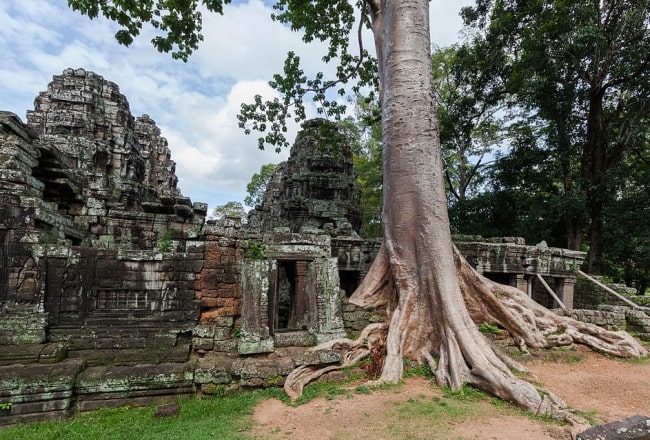


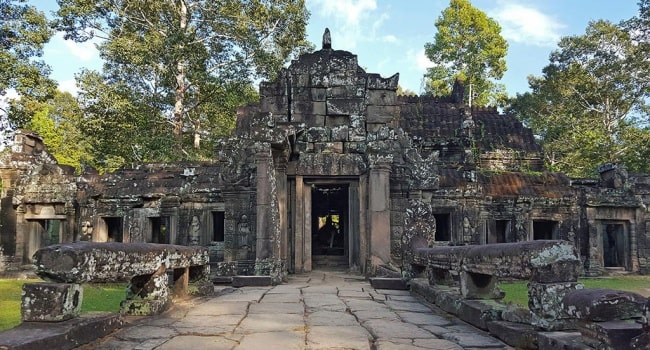

 02/01/2026
02/01/2026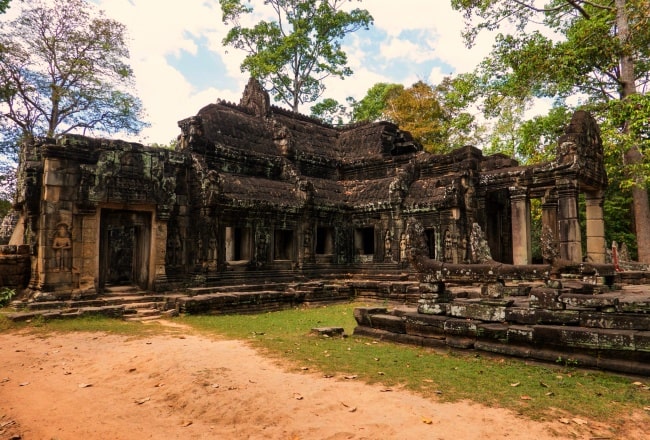
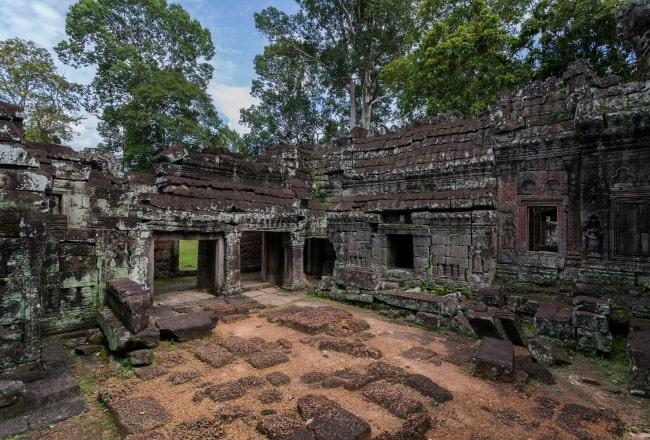
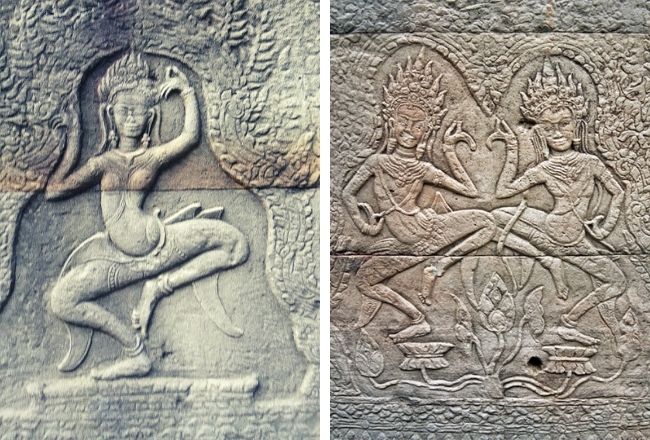




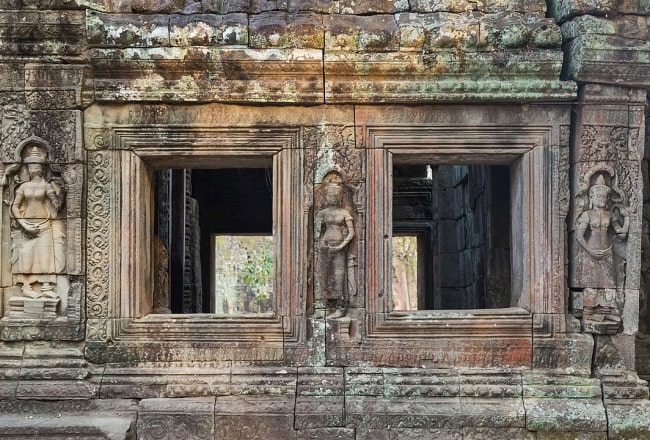
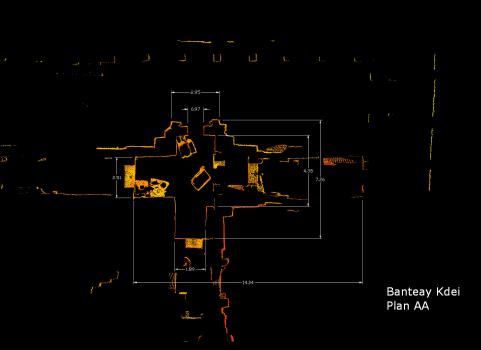
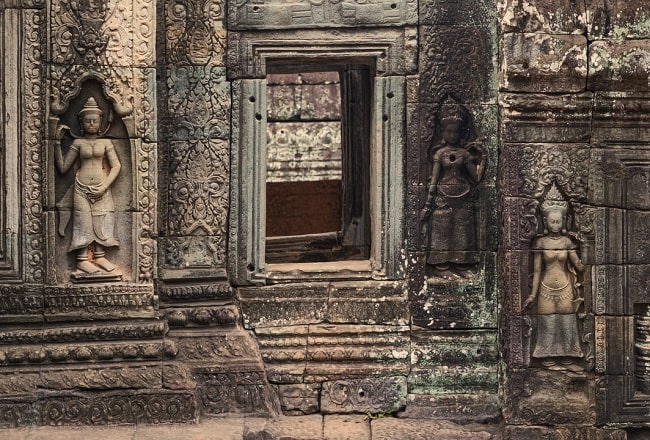
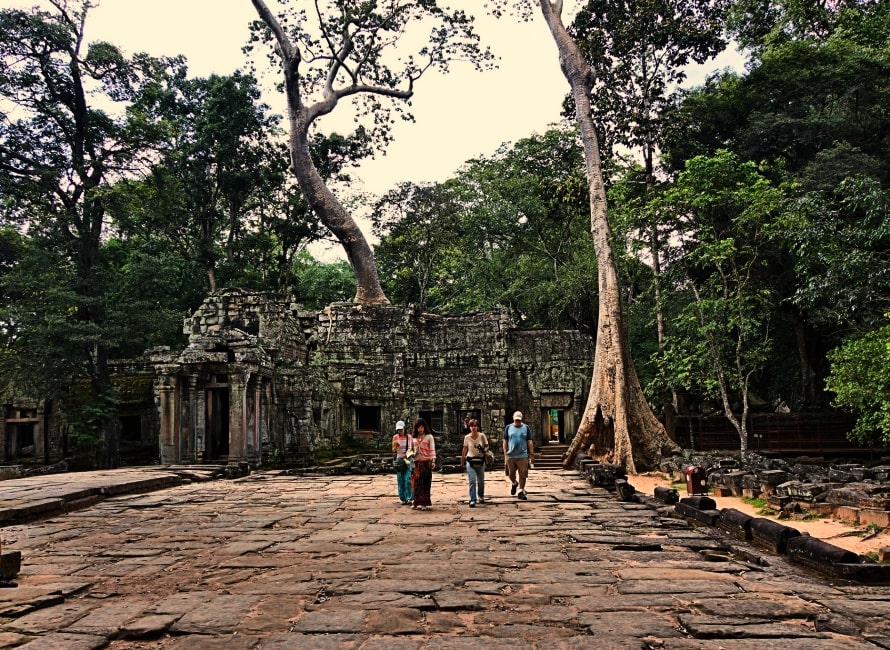
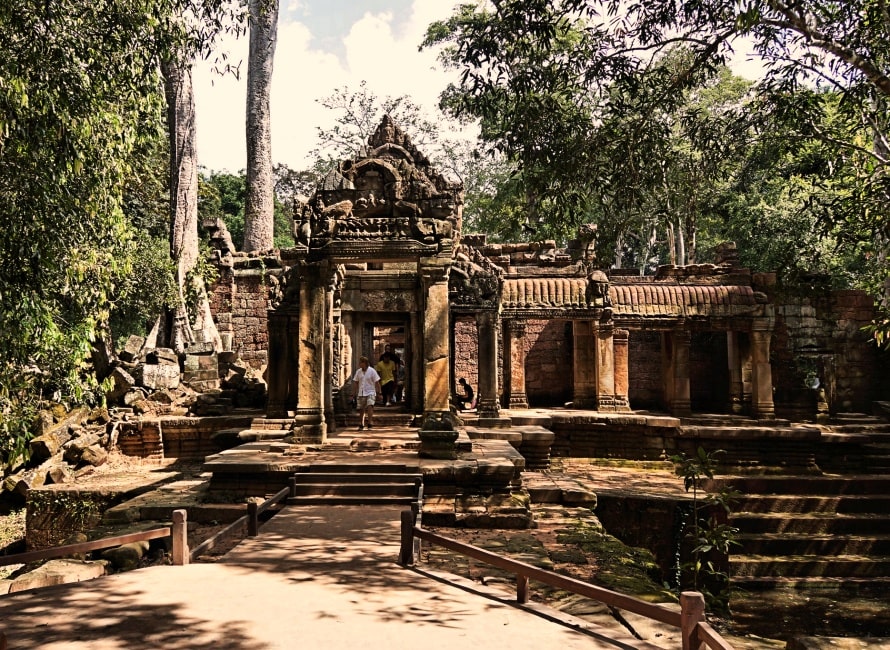

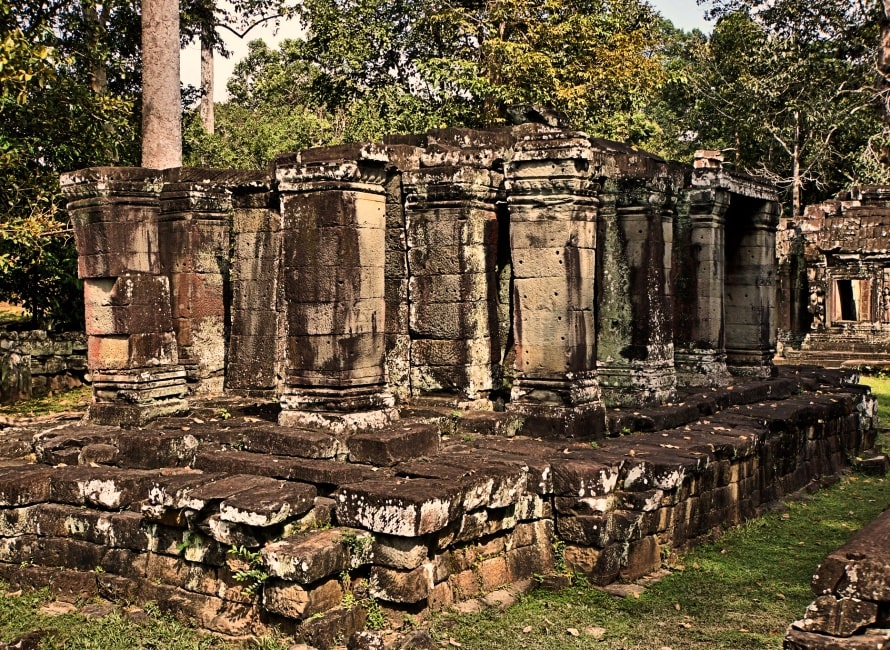
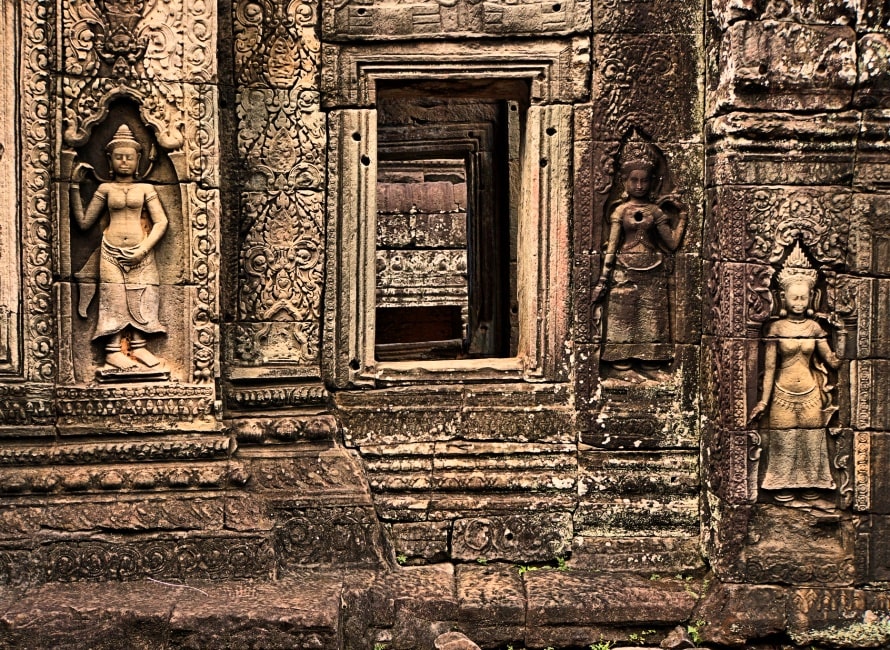
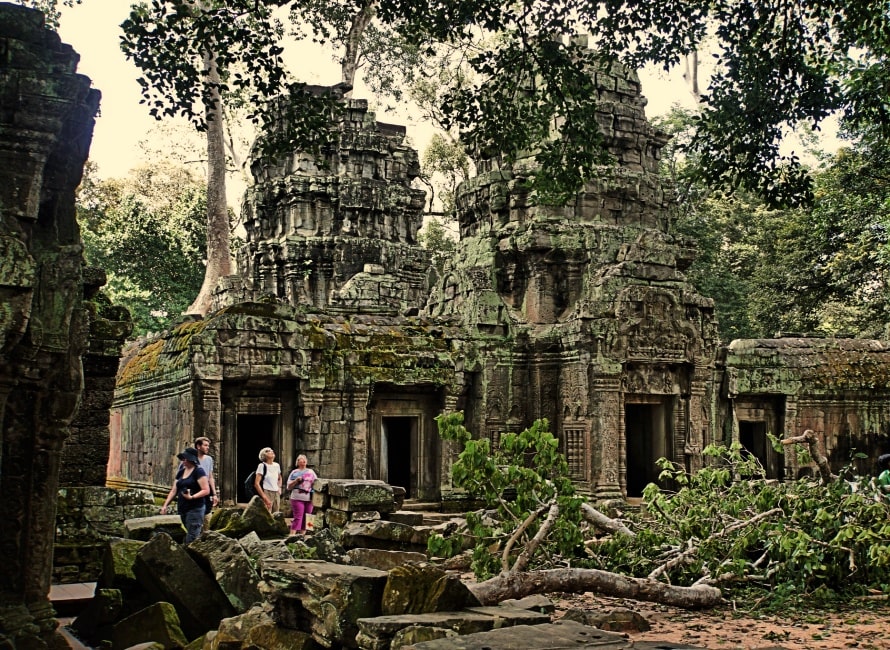
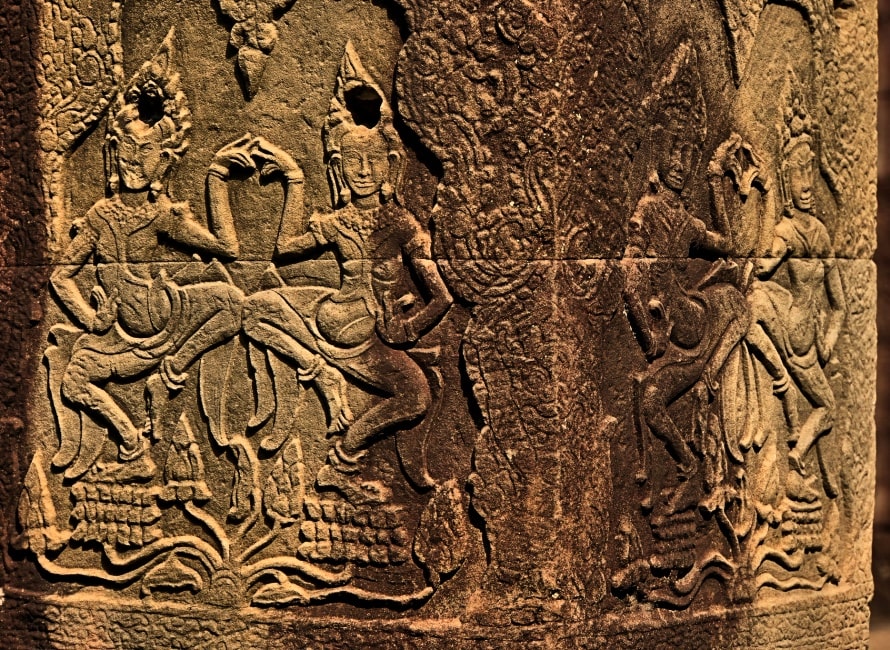
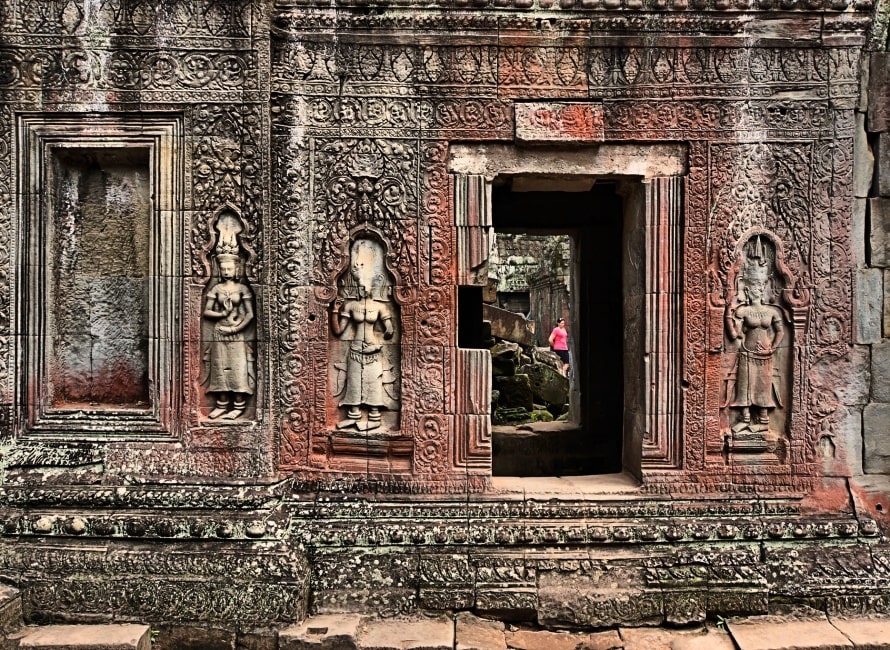





















Jolie LIEMMy name is Jolie, I am a Vietnamese girl growing up in the countryside of Hai Duong, northern Vietnam. Since a little girl, I was always dreaming of exploring the far-away lands, the unseen beauty spots of the world. My dream has been growing bigger and bigger day after day, and I do not miss a chance to make it real. After graduating from the univesity of language in Hanoi, I started the exploration with a travel agency and learning more about travel, especially responsible travel. I love experiencing the different cultures of the different lands and sharing my dream with the whole world. Hope that you love it too!